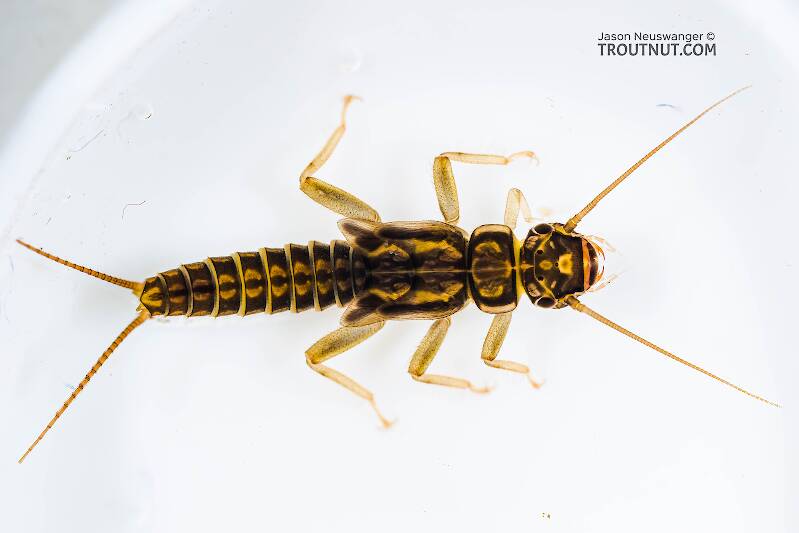
Blue-winged Olives
Baetis
Tiny Baetis mayflies are perhaps the most commonly encountered and imitated by anglers on all American trout streams due to their great abundance, widespread distribution, and trout-friendly emergence habits.


Mayfly Species Procloeon intermediale (Tiny Sulphur Duns)
Where & when
In 2 records from GBIF, adults of this species have been collected during July (50%) and August (50%).
Species Range
Physical description
Most physical descriptions on Troutnut are direct or slightly edited quotes from the original scientific sources describing or updating the species, although there may be errors in copying them to this website. Such descriptions aren't always definitive, because species often turn out to be more variable than the original describers observed. In some cases, only a single specimen was described! However, they are useful starting points.
Male Spinner
Wing length: 6 mm
Abdominal tergites 2-6 of male imago pale whitish, hyaline; a geminate ruddy dorsal line ; posterior margins broadly ruddy.
Turbinate eyes of dried specimen bright red. Thorax deep brown. Posterior portion of mesonotum, and the antero-lateral margin, with ruddy shading. Pleura brown, shaded with ruddy at base of wing and on the intersegmental areas. Sternum light sepia brown, the intersegmental membrane pale yellowish. Legs pale yellowish; femora show very faint traces of ruddy median bands. Wings hyaline, venation pale. Hind wing slightly longer and narrower than in C. simile (now a synonym of Procloeon simile).
Abdominal tergites 2-6 pale whitish, hyaline; a geminate ruddy dorsal line is present; posterior margins shaded broadly with ruddy, and with lateral wedge-shaped markings extending forward from these, halfway to the anterior margin. From near the apex of each wedge an oblique ruddy streak extends inward to the anterior margin; these streaks are most clearly marked on tergites 5 and 6, tending to break up into spots on tergites 2 to 4. Tergites 7-10 deep maroon brown. Sternites pale yellowish white; hyaline on 2-6, the apical sternites opaque with slight ruddy shading. Forceps and tails white.
The bright red eyes of dried specimens separate this species from the allied C. simile, in which the eyes are blackish brown; the thorax is also paler than in that species. From C. bellum (now a synonym of Procloeon bellum) it may be distinguished by the broader banding on the abdomen and the narrower hind wings.
Start a Discussion of Procloeon intermediale
References
- Needham, James G., Jay R. Traver, and Yin-Chi Hsu. 1935. The Biology of Mayflies. Comstock Publishing Company, Inc.
Mayfly Species Procloeon intermediale (Tiny Sulphur Duns)
Species Range
Common Name
Resources
- NatureServe
- Integrated Taxonomic Information System
- Global Biodiversity Information Facility
- Described by McDunnough (1931)

